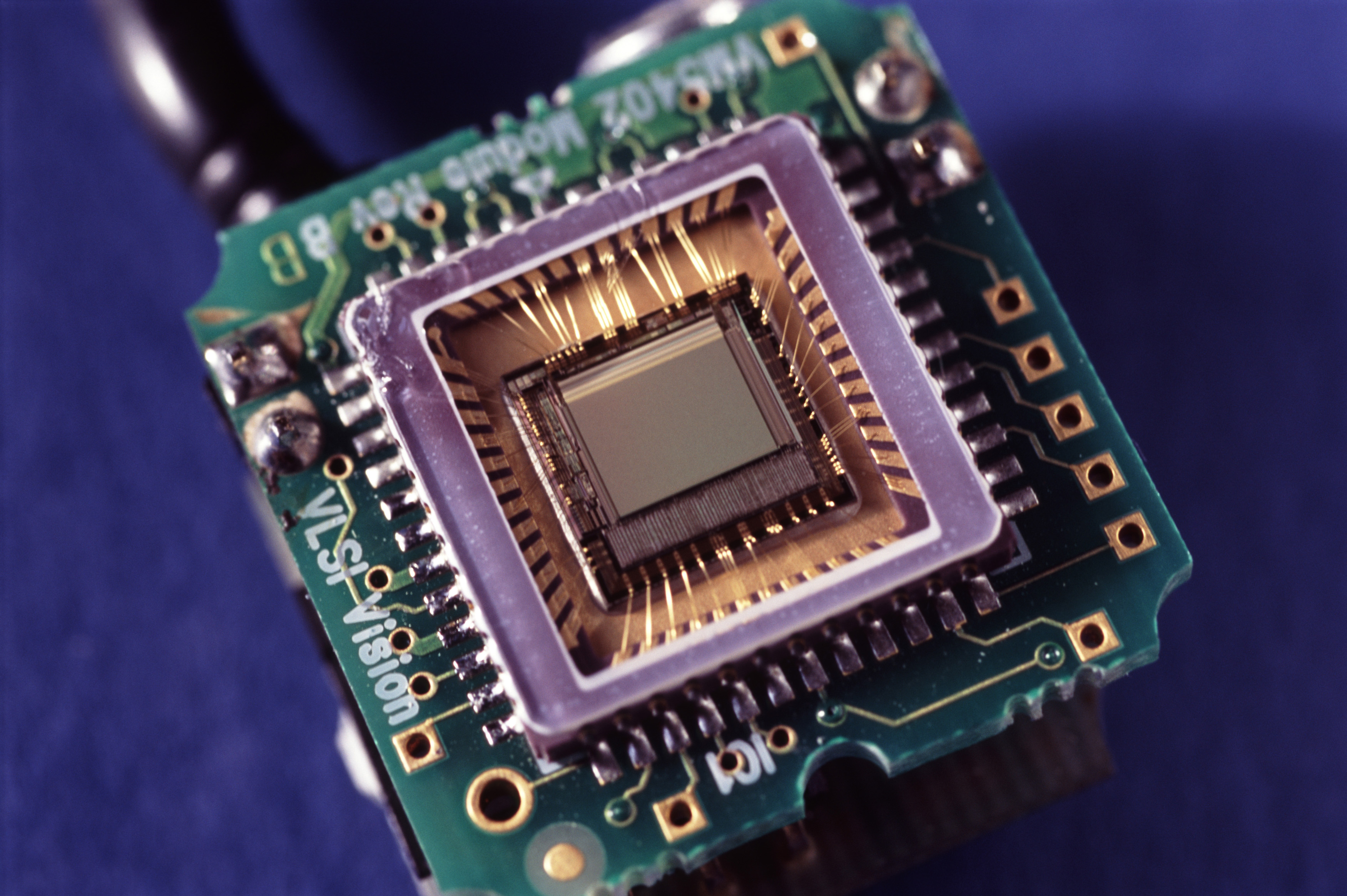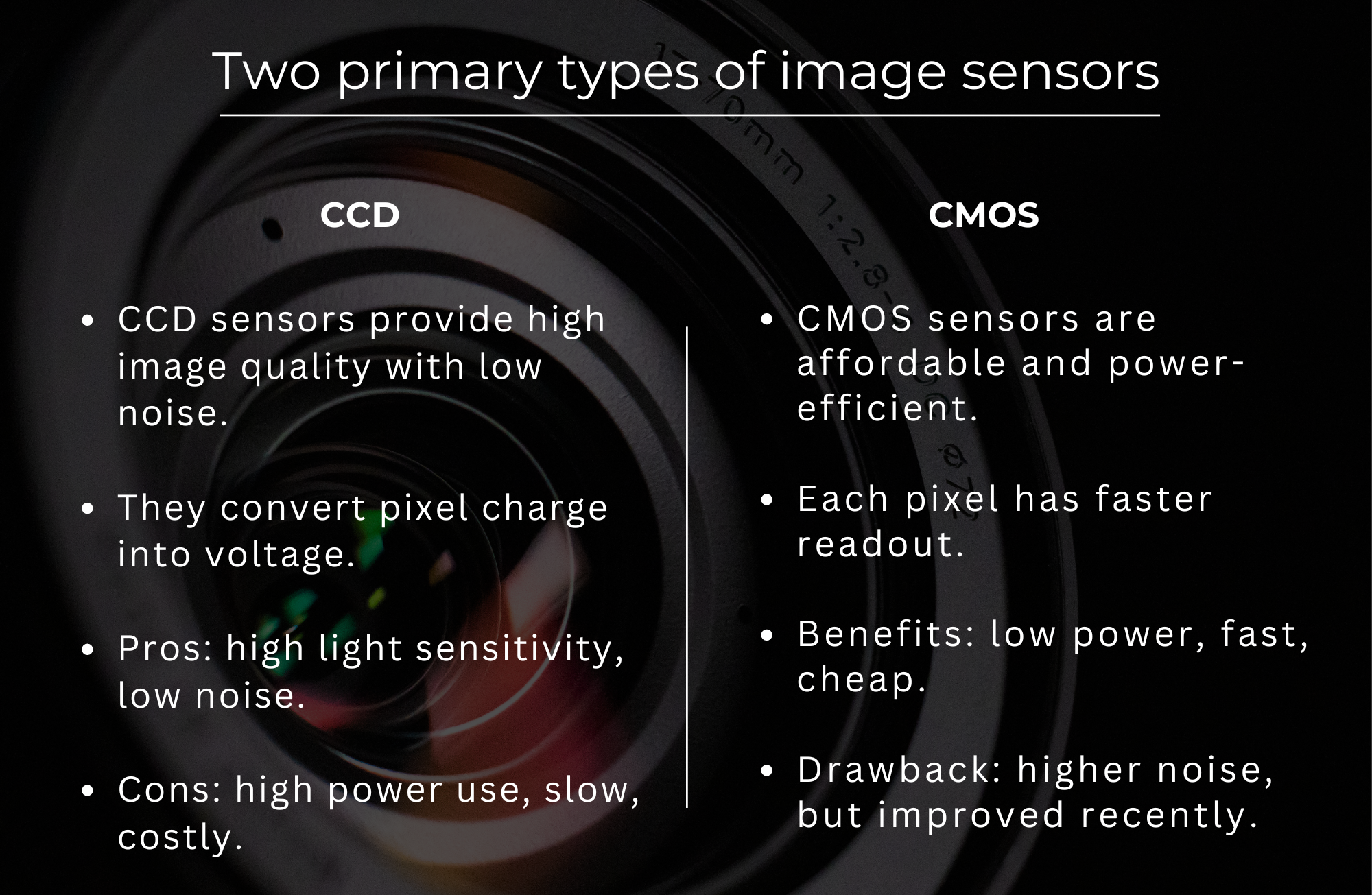What is an Image Sensor, their types and features?
Published Aug 09, 2024
What is an Image Sensor?
An image sensor converts light into electronic signals, enabling digital imaging in cameras, smartphones, and medical devices, crucial for image quality and device performance.

Types of Image Sensors
There are two primary types of image sensors:
- Charge-Coupled Devices (CCD):
- CCD sensors have been widely used in various applications due to their high image quality and low noise levels. They work by transferring charge from each pixel through the sensor to be converted into a voltage.
- Advantages: High-quality images, excellent sensitivity to light, and low noise.
- Disadvantages: Higher power consumption, slower readout speeds, and generally more expensive to produce.
- Complementary Metal-Oxide-Semiconductor (CMOS):
- CMOS sensors are more recent and have gained popularity due to their lower cost and power efficiency. Each pixel in a CMOS sensor has its own charge-to-voltage conversion, allowing for faster readout speeds.
- Advantages: Lower power consumption, faster readout speeds, and more cost-effective
- Disadvantages: Generally higher noise levels compared to CCD sensors, though modern CMOS sensors have significantly improved in this regard.

Parameters to Consider When Choosing an Image Sensor
Choosing the right image sensor for your application involves evaluating several key parameters. These factors determine the performance and suitability of the sensor for specific tasks.
- Resolution:
- Definition: The total number of pixels on the sensor, typically expressed in megapixels (MP).
- Consideration: Higher resolution provides more detail but can increase data processing requirements and storage needs.
- Pixel Size:
- Definition: The dimensions of individual pixels on the sensor, usually measured in micrometers (µm).
- Consideration: Larger pixels can capture more light, improving performance in low-light conditions and enhancing dynamic range. Smaller pixels increase resolution but may reduce sensitivity.
- Dynamic Range:
- Definition: The range of light intensities the sensor can capture, from the darkest shadows to the brightest highlights.
- Consideration: A higher dynamic range allows for better image quality in challenging lighting conditions, capturing more detail in both shadows and highlights.
- Sensitivity (ISO Range):
- Definition: The sensor's ability to capture light, often referred to as ISO sensitivity.
- Consideration: Higher sensitivity sensors perform better in low-light conditions but may introduce more noise at higher ISO settings.
- Frame Rate:
- Definition: The number of frames the sensor can capture per second, measured in frames per second (fps).
- Consideration: Higher frame rates are essential for applications like video recording and fast-moving object capture, requiring quick and accurate imaging.
- Noise Performance:
- Definition: The amount of random variations or "noise" in the captured image, which can degrade image quality.
- Consideration: Lower noise levels are crucial for high-quality imaging, especially in low-light conditions.
- Shutter Type:
- Definition: The method used to expose the sensor to light, either global or rolling shutter.
- Consideration: Global shutters capture the entire image simultaneously, useful for fast-moving objects. Rolling shutters read out the image line by line, which can cause distortion in high-speed scenarios.
- Color Filter Array (CFA):
- Definition: The arrangement of color filters over the pixels to capture color information, commonly using the Bayer pattern.
- Consideration: The CFA impacts color reproduction and sensitivity. Some sensors offer advanced CFAs for better color accuracy.
- Size and Form Factor:
- Definition: The physical dimensions of the sensor and its compatibility with the imaging system.
- Consideration: The sensor size should match the optical system and application requirements, with larger sensors typically offering better performance but requiring larger lenses.


